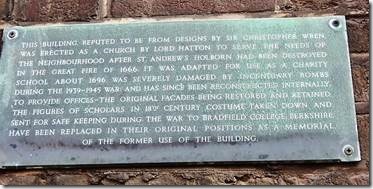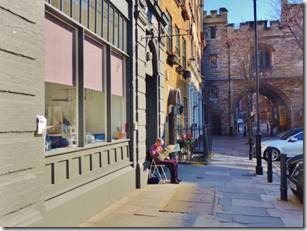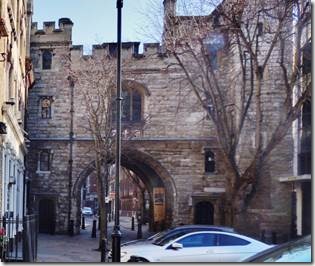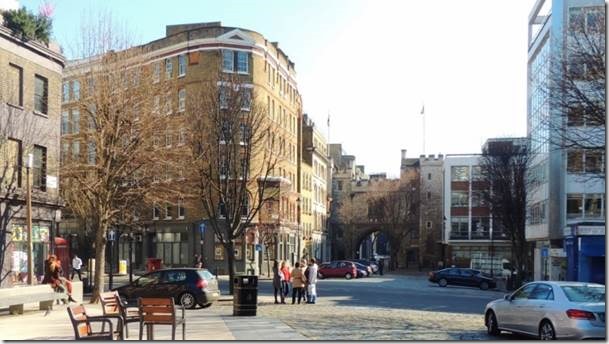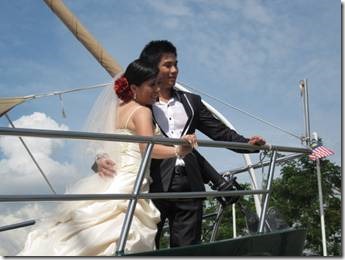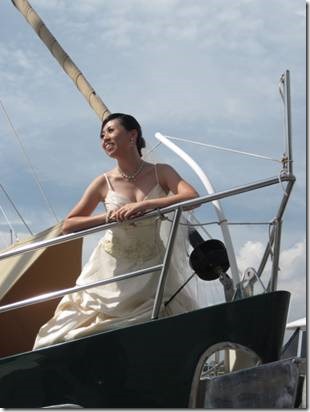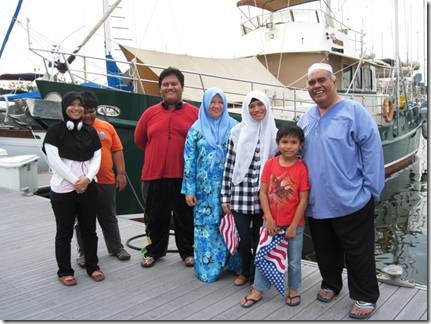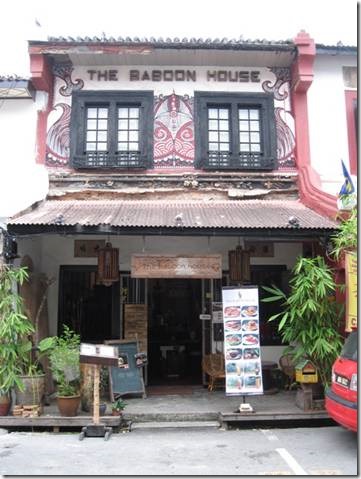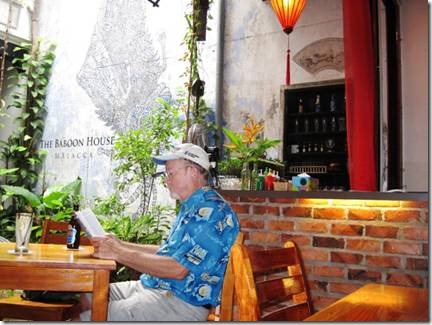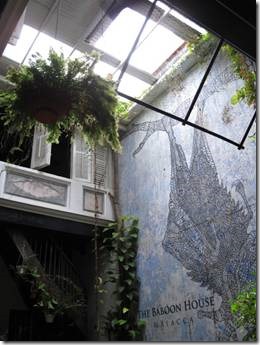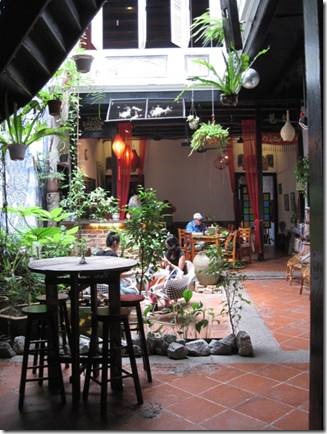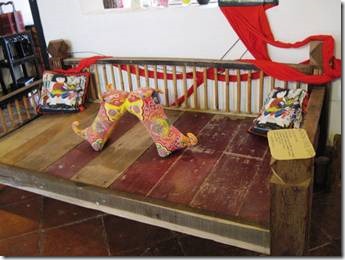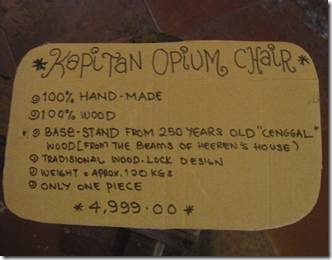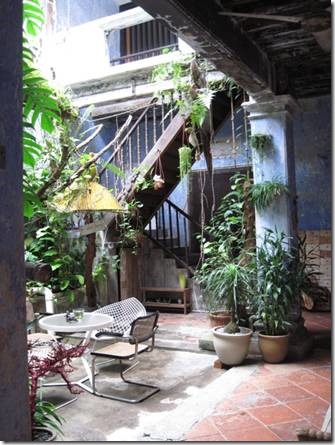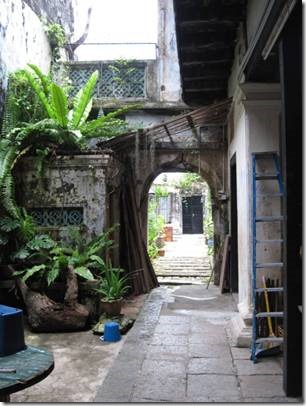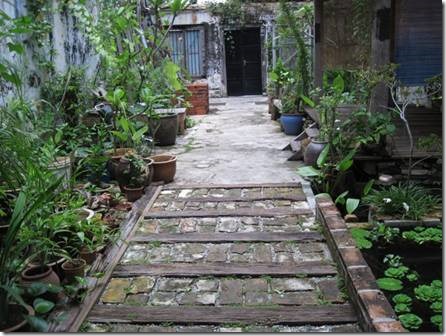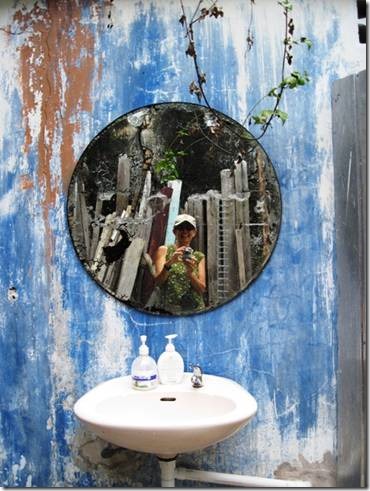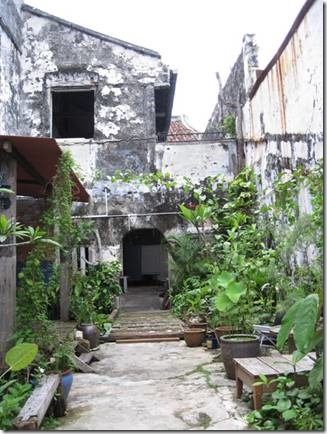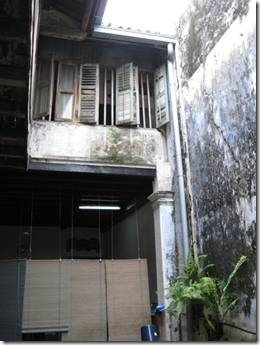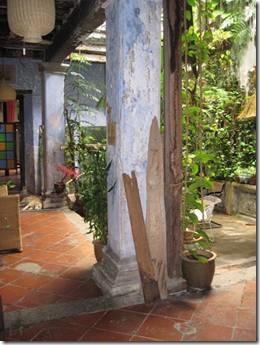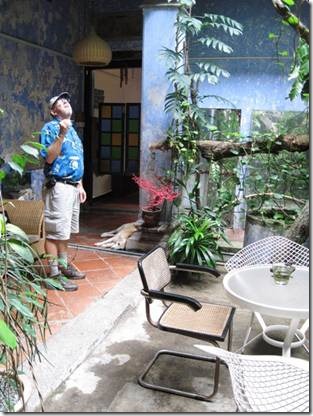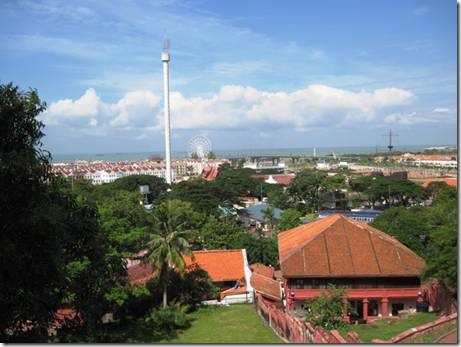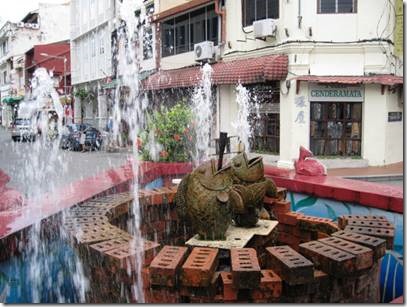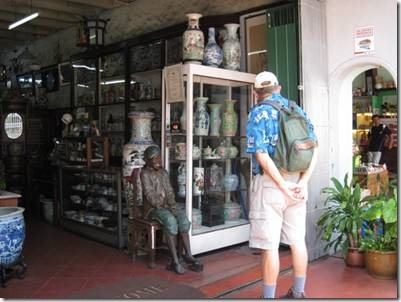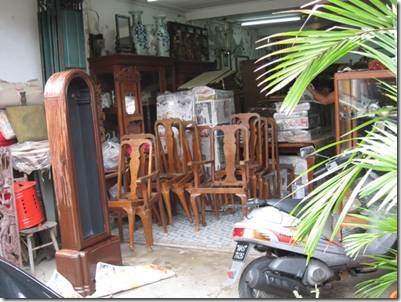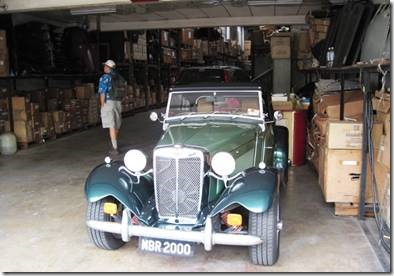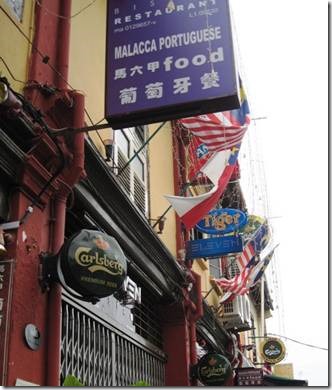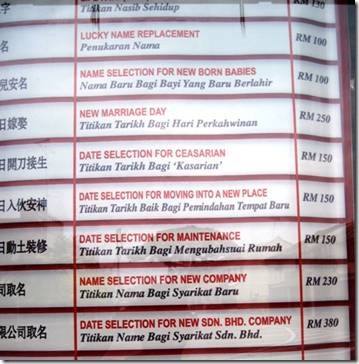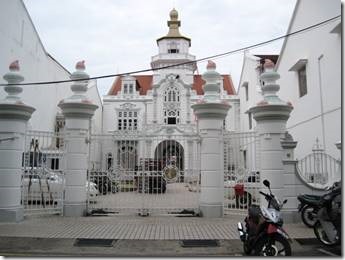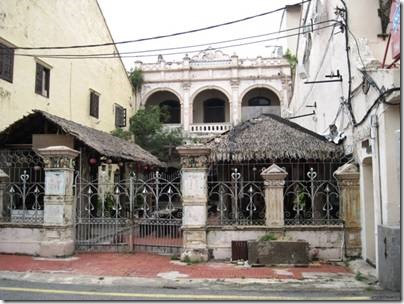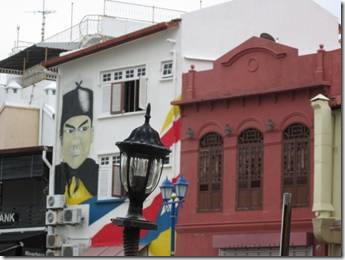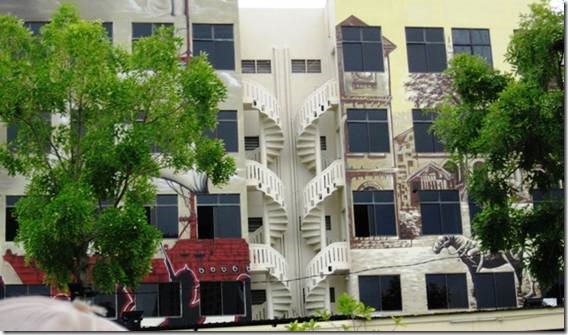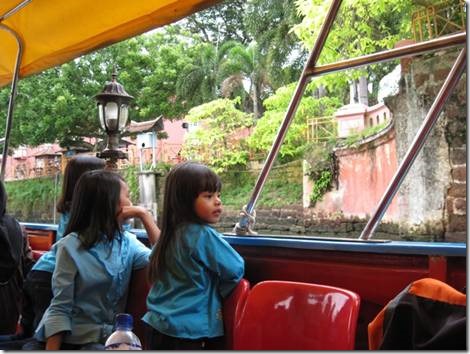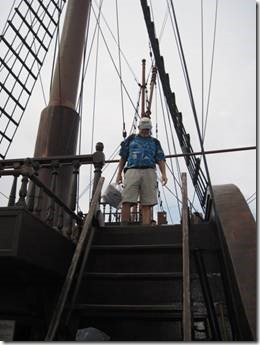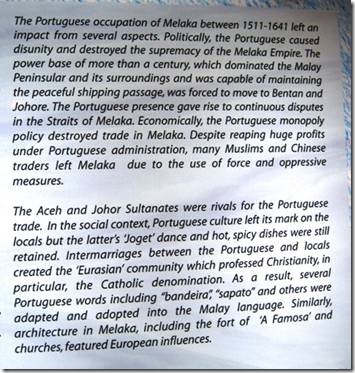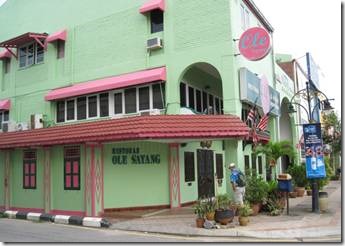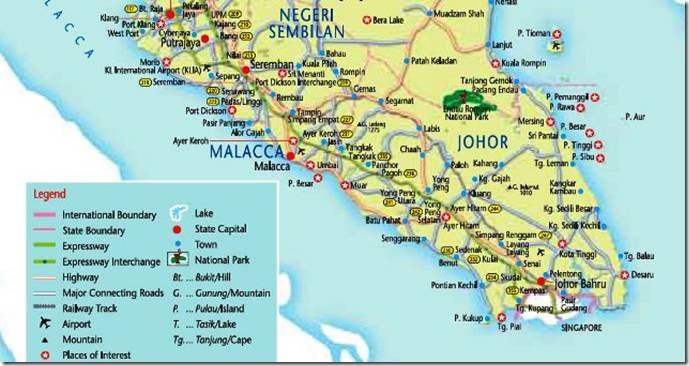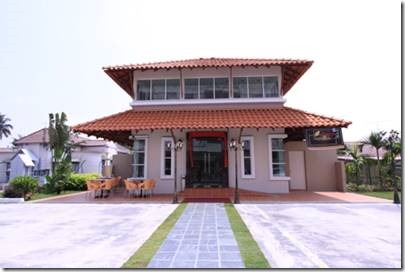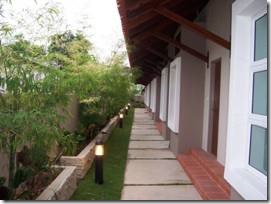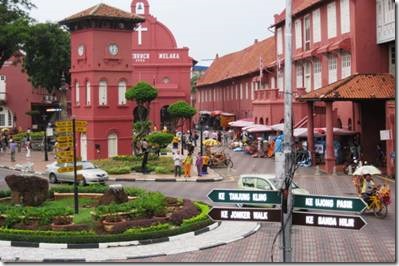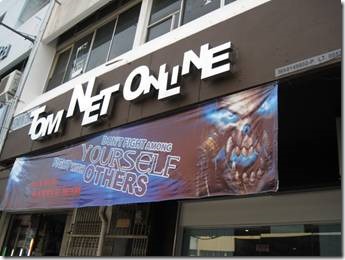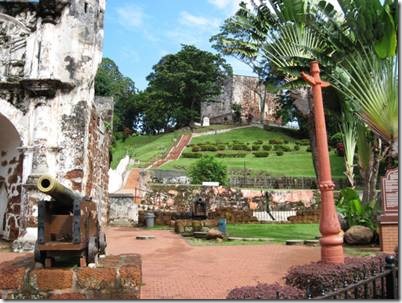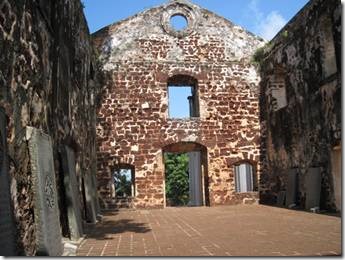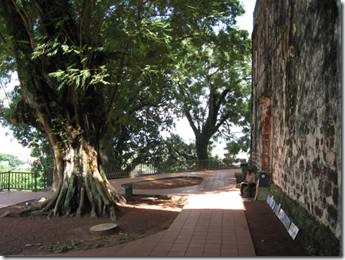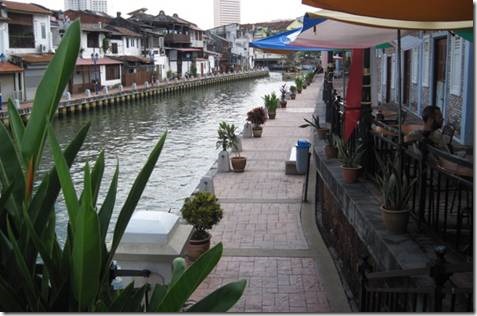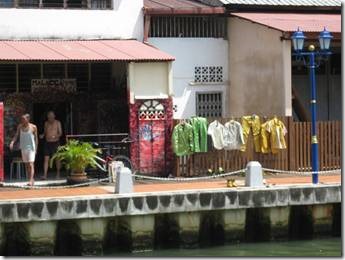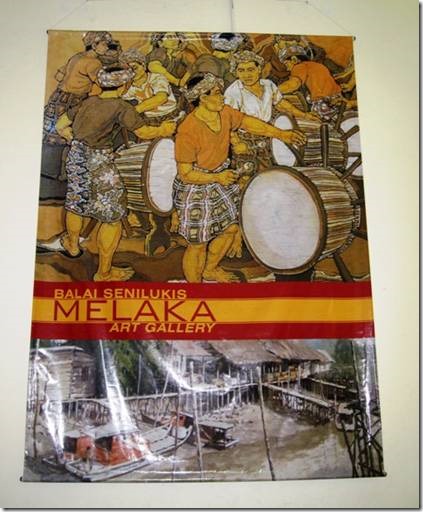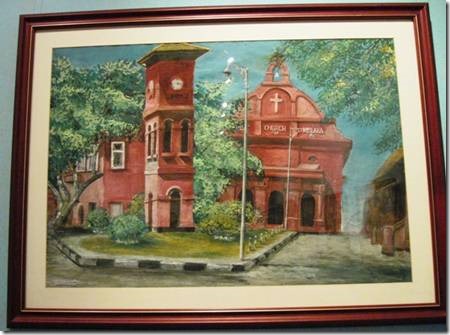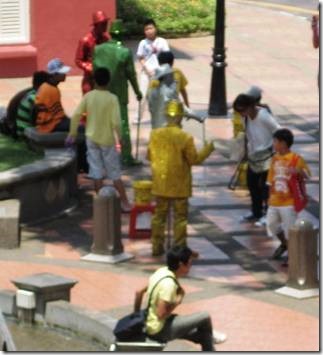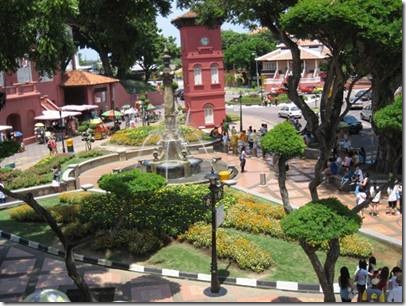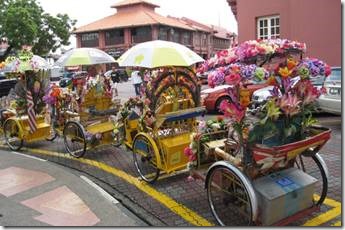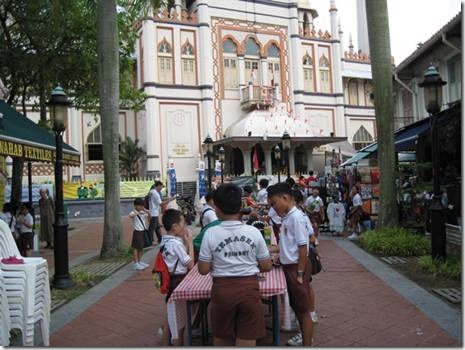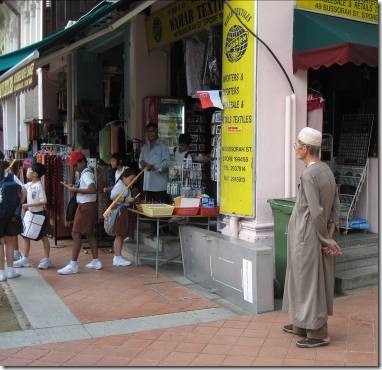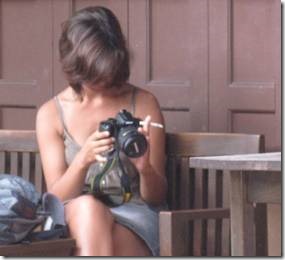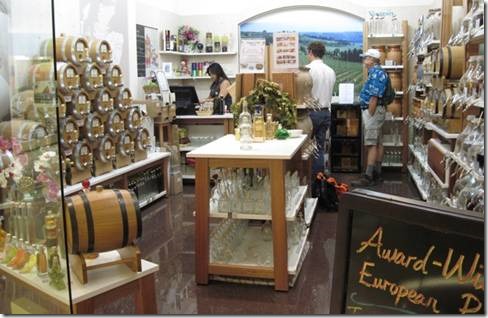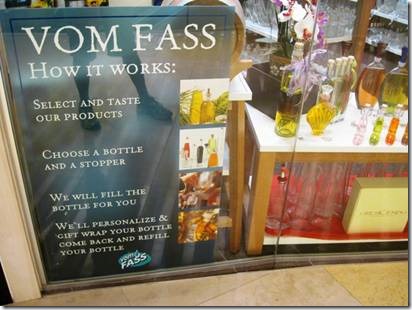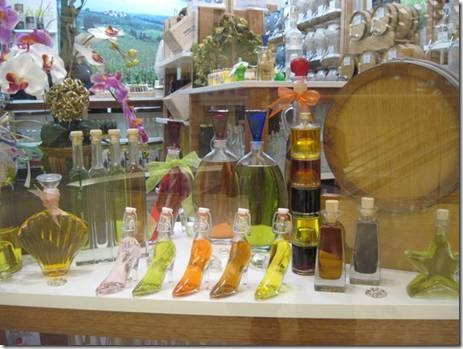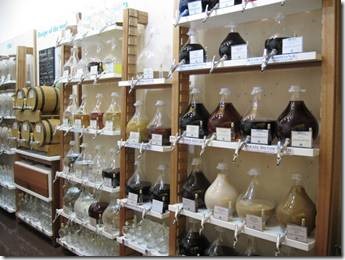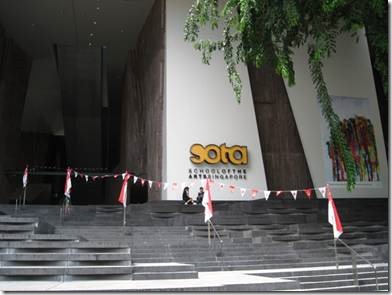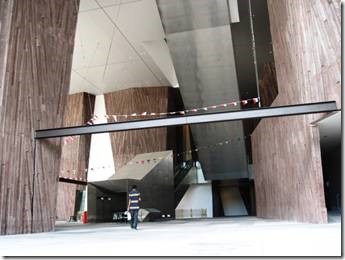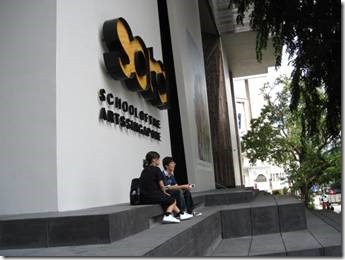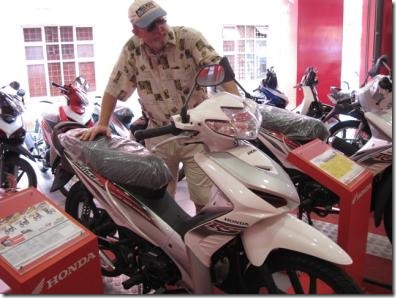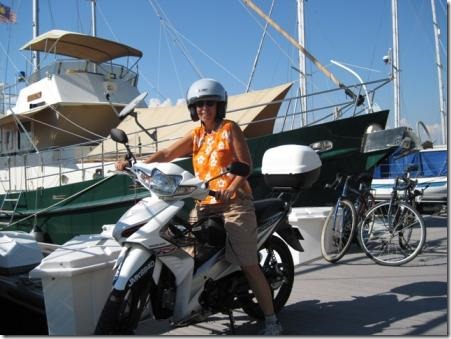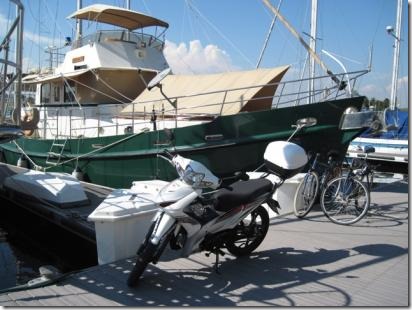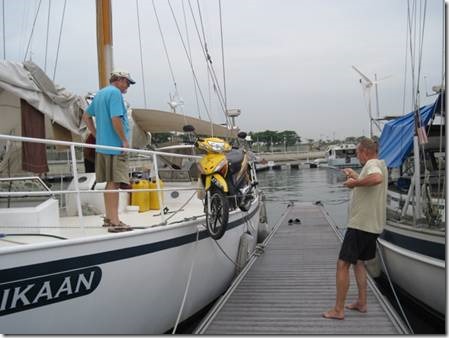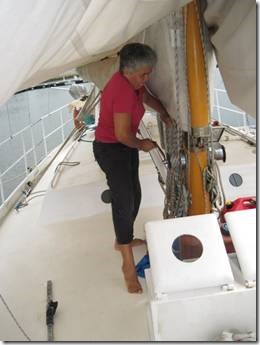Our Friend Dean has decided to put his Diesel Duck 382 on the market after using it part time in mostly fresh water. Information can be found at: http://myjubilee.net/
Category Archives: Uncategorized
Virginia Department of Forestry
Roanoke, VA USA
Hi Everyone,
Last Saturday my sister Harriet and I drove to Philadelphia to visit my nephew Andrew, our friend Harriet G and our cousin Naomi in Manhattan. It was two full days of driving and two full days of visiting but really glad we went. I took lots of photos, but never enough. I’ll write it up next after this quick email about our “land story” and the helpfulness of the Virginia Department of Forestry. Virginia Department of Forestry http://www.dof.virginia.gov/
Ru
Randal contacted the Forestry Office in Salem to help us make the best decision concerning the trees that needed to be cleared for the driveway and house. It’s one of the many services they provide insuring we have not only sustainable forests, but also ground water, wildlife habitat, etc. Years ago back in my library days there was the annual leave identification project assigned by just about every school in the valley. I can’t remember what grade but every student had to do it. Thanks to a wonderful library patron Charlie Blankenship and one of our reference staff Becky Woodhouse, we developed a partnership with the forestry office. They supplied us with copies of their tree identification booklets and we sold them to the students making it easier for everyone. The library had bought several booklets for loan but most students wanted their own copies. Charlie, Roanoke County, the Forestry Office, and I worked together for a grant to buy engraved identification stakes to create a tree walk behind the library. We labeled about a dozen trees which was about the number the students needed to identify. They could then look up the information in the forestry booklet. One of the foresters, Bob Boren I believe, and Spencer Watts, then Library Director spent two days cementing the identification stakes into the ground.
Western Regional Office.
The mission of the Virginia Department of Forestry is “We Protect and Develop Healthy, Sustainable Forest Resources for Virginians.” The Department is dedicated to the Stewardship management of the forest resource by providing the services necessary to manage and protect the 15 million acres of timberland in Virginia. This timberland supports one of the largest industries in the Commonwealth.
The Department of Forestry offers a variety of services to private landowners to assist them in the management of their timberland. Private landowners interested in the management of their timberland and the Department of Forestry Stewardship Program should contact one of the six Regional Offices located throughout the state or the office of the State Forester in Charlottesville.
|
The Western Regional Office on Riverland Road off Apperson in Salem. We met Denny here and then drove up to our land. |
|
Fire danger sign at the office and then on the forestry truck parked in our future driveway. |
|
Randal showing Denny McCarthy, Senior Area Forester, the proposed route of the driveway created by the engineering firm Randal is working with. Eventually everything must be approved by the Roanoke County Engineering Department. Neighboring houses just across from the driveway entrance. |
|
Learning about our trees from Denny Much of the beautiful fall foliage has turned to fallen brown leaves. |
|
Newest editions http://www.dof.virginia.gov/print/edu/Common-Native-Trees.pdf is the online PDF version but for $5.00 you get both books which is a bargain! We bought a copy of each and as Denny pointed out a tree species I marked it off on tree list pages: Blackgum, Chestnut Oak, Red Maple, Sourwood, Table Mountain Pine, Virginia Pine, and Yellow Pine. It will take me a good deal of studying to know which is which but that will be the fun part. The Forestry Office offers a 40 hour master forester course which Randal and I will probably both take at some point. |
|
After our session with Denny, Randal and I had a quick lunch at the Omelet Shop and then it was off for the hour’s drive to Rich Creek, VA to Auto Express. Not to look at cars, but to look at crawler-loaders for clearing the land for the driveway and the house lot. Some were too big and some were too small. We’re not in the market just this second, but when we return to Roanoke next year, it will be tops on Randal’s list of essentials. |
|
He already looks the part, doesn’t he! Randal really wants to clear the land himself. From our boating years I’ve come to believe that Randal can do just about anything he sets his mind to do. Randal wants to do as much of it as he can because he likes the process as much as the end product. I just want to live in our new home before I’m too ancient to enjoy the walk to the mailbox! |
Sunday at the Tate Modern and Clerkenwell
Cheers,
It has been a lovely day. Randal and I went to visit our friends Jane and Rick Lane-Roberts in Richmond. We were given a wonderful walk around and drive around tour which I’ll share in a future email . Future email is getting to be a very overused phrase by me lately. Not much time left in London so we have to make the most of it.
This email is another Ruth and Andrew adventure. We visited an area called Clerkenwell and I really do need to return! Lots to see there; this is just a very small bit.
Ru
| Sunday was a day of “walking and seeing”. Visit Andrew’s website http://www.admknitting.com/ and you’ll begin to understand why we went off to see what we did rather than the Tower of London or Westminster Abbey. Andrew and Randal did ride the London Eye and the Emirates cable car across the Thames. I took a pass. I prefer the view from the fire Monument . But there’s still time so who knows.
We started the day walking along the Thames north bank towards the Millinneum Bridge where we would cross over to the Tate Modern. On the way we passed this somewhat sad looking church tower which I’d always meant to investigate. So we did. It’s called the Tower of St Mary Somerset. |
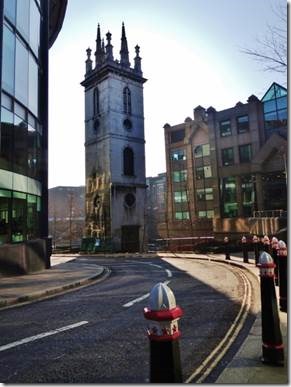 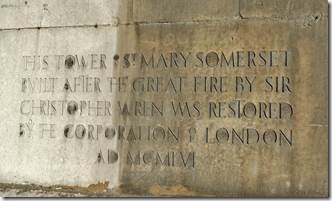
“This tower of St Mary Somerset built after the great fire by Sir Christopher Wren was restored by the Corporation of London AD MCMLVI” = 1956 (The rest of the church had been demolished earlier) http://www.ludgatecircus.com/st_mary_somerset.htm is the best source for the history and demolition of the church and the preservation of the tower. |
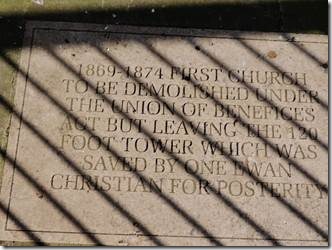
Second plaque at the church. “1869-1874 First Church to be Demolished under the Union of Benefices Act But leaving the 120 Foot Tower which was saved by one Ewan Christian for Posterity. “ Ewan Christian, architect of the National Portrait Gallery in Charing Cross, was in 1887 “appointed architect to the Charity Commissioners, his main work for them being a comprehensive survey of the Wren churches then still surviving in the City of London.” http://www.scottisharchitects.org.uk/architect_full.php?id=203623 Though proposed in 2008 to make the tower of St Mary Somerset into a single residence, it has yet come to pass. “WGDP were retained to advise on a Building at Risk. It is a Grade I listed building in the City of London by the name of: The Tower of St Mary Somerset designed by Sir Christopher Wren with Hawksmore Pinnacles. Surrounded by large office blocks on three sides, all that remains of the former Church is the tower. The nave was demolished c. 1870. The Tower has been vacant since about 1975. Up until then, it had been used by Bernard Miles, of the Mermaid Theatre, for rehearsal purposes. This is the second Wren Tower that WGDP has dealt with successfully. The first, at Christ Church Tower to the north of St Paul’s Cathedral, is a Scheduled Monument and one which we successfully secured Scheduled Monument consent, listed building consent and planning permission to convert at Church Tower into a single dwelling. On that experience, the City of London Corporation invited us and the developer of Christ Church Tower to look at St Mary Somerset. WGDP marshalled all the information together to submit listed building and planning applications to convert St Mary Somerset Tower into a single residence. Development is expected to commence during 2008.” http://www.benchmarkplanning.co.uk/somerset.html http://thelondonphile.com/tag/st-mary-somerset/ Church towers that have become homes. An interesting side note to the existence and demolition of churches and the graves below them. “It seems this subliminal message holds some truth. By the mid-1800s, the graveyards of the City’s churches were overcrowded, massively unsanitary, and actually thought to be spreading disease through poor drainage of burial grounds. A wholescale clearing of Churches and their graveyards was undertaken, after the passing of the Union of Benefices Act 1860, and local men of God were responsible for overseeing the re-burial of masses of the City’s dead in the City of London Graveyard and Cemetery, the new municipal facility that boasted a huge area and good drainage. All across the site, these dead are buried in mass graves, hailing from Churches including St. James, Duke Place, St. Helen Bishopsgate, St. Martin Outwich and St. Mary Somerset & St. Mary Mounthaw. All four mass graves are sited in one area of one road on the site… “ |
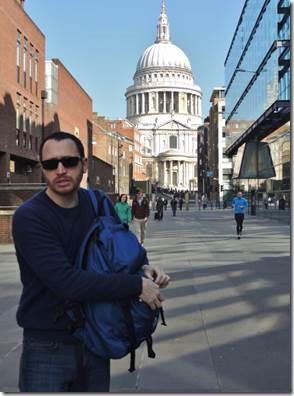
On our way across the Millennium Bridge to the Tate Modern; Andrew with St Paul’s in the background Andrew happily allowed me to snap candid photos, but drew the line at formal poses. |
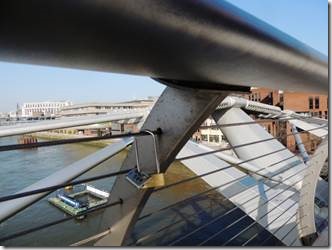
A padlock on the Millennium Two journalist with opposing viewpoints of the padlocks…
“Valentine’s Day: just don’t say it with padlocks : “ “I was walking over the Millennium Footbridge in London and, yes, more locks! I returned a few weeks later and found that the locks were gone. Perhaps council workers in London had swooped in. I contacted the City of London, which maintains the bridge. “This isn’t a big issue for us as it is quite a rare occurrence with our bridges,” a spokesman said. “We don’t have an official policy on this but occasionally as part of general maintenance they are removed.” http://www.independent.co.uk/ “The lock of love: For years, couples from around the world have left padlocks on bridges as tokens of their love. Now Britons are unlocking their inner passions too” I remember first seeing this phenomenon on Yellow Mountain in China where there were hundreds of them on the fence bordering the paths around the mountain top. Huangshan, China Although Pécs takes credit for love-locking in Europe, some believe the tradition originated in China. You’ll find these eternal mementos all around the country but one of the best places to see love-locks is Huangshan (Yellow Mountain) in Anhui Province, known as ‘China’s loveliest mountain’. The mountain’s beautiful scenery and surroundings inspired classic Chinese poets and painters; think dramatic peaks, rugged trees and seas of clouds. The area’s romantic atmosphere spans from local legend that a beautiful girl fell in love with a poor man. Her father insisted she married a rich man instead, but on their wedding day, the girl escaped with her poor lover up Huangshan, and they threw themselves off the mountain to be together forever. Nowadays, less drastic lovers attach padlocks to chains and railings on Lotus Peak, and throw the keys off the mountainside in memory of this legend. |
| Harry Callahan Images of Horseneck Beach
Horseneck Beach will always say “home” to me and we still visit it each trip “up north.” I even went swimming one September there not so many years ago with our pal Har from Dartmouth. “Well, knock me down with that proverbial feather!!” to quote our new pal Jane Parker…. Because while wandering around the Tate Modern there were photos of Horseneck Beach in the Harry Callahan exhibit. And they were taken in 1971 when my family still lived in New Bedford (just near Westport/Horseneck Beach.) Harry Callahan (American, 1912–1999) Harry Callahan, Tate Modern – exhibition review This show reveals the remarkable diversity of America’s great 20th-century photographer Harry Callahan “In 1961, when RISD [Rhode Island School of Design] decided to establish a degree program in photography, David L. Strout, Vice President and Dean of the College, hired photographer Harry Callahan from the Institute of Design in Chicago (ID) where he had trained and taught under the New Bauhaus influence of Moholy Nagy. By the 1950s, Callahan had achieved a significant national reputation as an American modernist photographer. Over the next eight years, Callahan established an undergraduate photography concentration in the Graphic Design Department and in 1963, established an MFA degree in photography.” http://photo.risd.edu/history.php http://www.nytimes.com/2007/10/02/arts/design/02call.html?pagewanted=all&_r=0 really good interview with his widow/model Eleanor and daughter Barbara. |
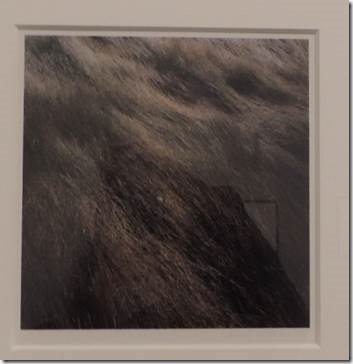 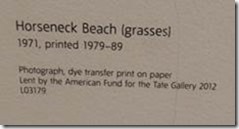 |
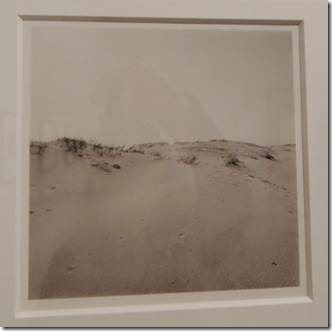 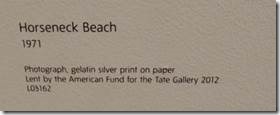 |
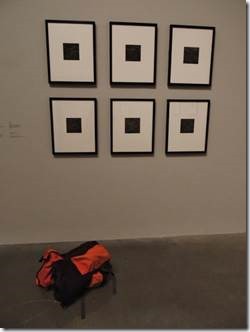
Black White & Orange |
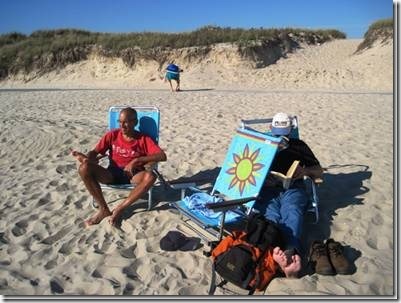
Horseneck Beach 40 years after Harry Callahan; there are still sand dunes and beach grasses; hopefully forever! This photo was taken October 2011 when we visited our “up north friends.” Dick, Randal and Orange bag …The water was too freezing cold for me, but for “old time’s sake, I got in, got wet, and got out! Har is still swimming! |
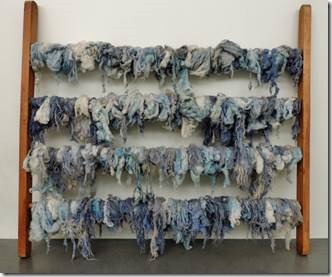
I like sheep, wool and blue so I like this….. Untitled 1968 by Jannis Kounellis “Untitled comprises two upright wooden posts that hold four cross bars loosely wrapped with wool. Some of the wool is dyed in delicate shades of light blue. While the wool appears uncarded and untamed, it has been arranged on the cross bars in such a way as to suggest a harmonious coming together of a natural material and human work. The work is displayed leaning at an angle against a wall. The piece is typical of Kounellis’ work of the late 1960s. At this time Kounellis, who was living in Rome and was one of the leading figures in the Arte Povera movement, had abandoned painting as a medium and had embraced an art made of everyday materials. He used wool, coal, iron, stones, earth, cacti, wood and even flames and live animals (in two controversial untitled works, exhibited respectively in the Galleria L’Attico, Rome, in 1967 and 1969, he used his own pet parrot and twelve horses).” http://www.tate.org.uk/art/artworks/kounellis-untitled-t07074/text-summary for the full summary. |
| After a couple hours at the Tate Andrew and I were ready for lunch and our next venue, Clerkenwell. Clerkenwell, like Shoreditch, is an area of artisans and refurbished buildings but still retains it’s neighborhood feel. We discovered Sundays might not be the best day to visit the area as there’s not the usual interesting weekday activity. |
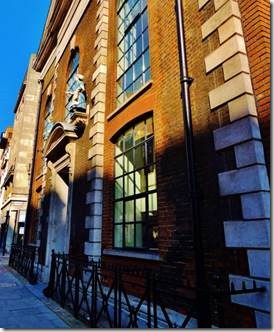
Charity School recognizable to me by the blue coated children over the door. The plaque reads….. “This building, reputed to be from designs by Sir Christopher Wren, was erected as a church by Lord Hatton to serve the needs of the neighbourhood after St. Andrew’s Holborn had been destroyed in the Great Fire of 1666. It was adapted for use as a charity school about 1696, was severely damaged by incendiary bombs during the 1939 – 1945 war, and has since been reconstructed internally to provide offices – the original facades being restored and retained. The figures of scholars in 18th century costume, taken down and sent for safe keeping during the war to Bradfield College, Berkshire, have been replaced in their original positions as a memorial of the former use of the building.” |
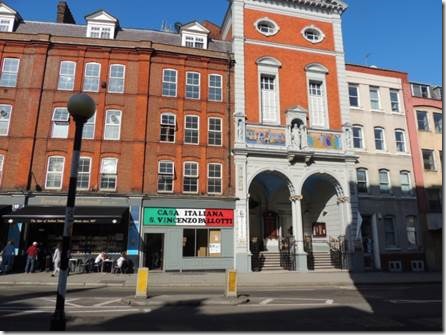
No. 136 Clerkenwell Rd Church of St Peter “At the top of Leather Lane on Clerkenwell Road, look around for signs in the Italian Quarter – the wine shop, the food store and the driving school. The Italian Church of St Peter was opened in 1863 and still draws its congregation from all over London. Since 1883, it has held a procession every July to celebrate the Feast of Our Lady of Mount Carmel. Plaques commemorating Giuseppe Mazzini, the Italian patriot, are found across the road at Laystall Street and also at the far end of Hatton Garden. These days it’s hard to believe that this area was once famous for its gardens. See the clues in the street names of Vine Hill and Saffron Hill. John Gerard, who published his famous Herball or Generall Historie of Plantes in 1597, also had a Holborn garden.” http://www.italianchurch.org.uk/The_History.html tells the really interesting story of the Italian neighborhood and the church. |
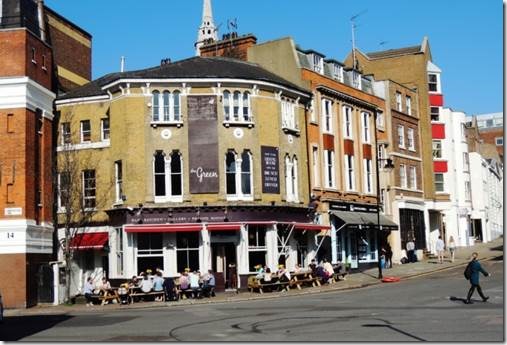
The story of No. 29 is quite humorous. Now the Green Pub/Gallery/Restaurant “No. 29. This former public house was erected in 1866–7. Named the Fox and French Horn, it replaced an earlier inn on the site, known in 1781 as the French Horn, and as the Fox and French Horn by 1796. (ref. 144) The rebuilding was carried out by the licensee Joseph Lambert, who had taken on the lease of the inn and five small cottages behind in Fox Place (now demolished, see Ill. 99). (ref. 145) The new building, savouring mildly of Venetian Gothic, was one of the first works undertaken by the architectural practice of Walter Augustus Hills and Thomas Wayland Fletcher, a tempestuous partnership which nevertheless endured for twenty years. Hills and Fletcher had both been employed by Poplar District Board of Works as surveyors, and their most important achievement was the board’s new offices of 1869–70, on Poplar High Street. Pubs were the mainstay of their business, however, and both men were more or less alcoholics. (ref. 146) At the time of the rebuilding, Fletcher was still employed by the Poplar Board of Works, and possibly for this reason his name does not appear in the official records. (ref. 147) But he later claimed the design as his own, accusing his ‘reptile of a partner’, Hills, of taking ‘no responsibility’ for the work of the practice, other than the levelling. (Apparently the levelling instrument belonged to Hills and he would not lend it to Fletcher.) (ref. 148) Although still working out his notice at the Board of Works, Fletcher was at pains to keep an eye on the building’s progress, rising three mornings a week at 4:45am in order to travel to Clerkenwell Green, and afterwards breakfasting at a local café before making his way to the board’s offices in Poplar. (ref. 149) Since its closure as a pub in the early 1920s, the building has lost various decorative features, among them the Corinthian pilasters originally framing the ground-floor windows (Ills 95, 119).” http://www.british-history.ac.uk/report.aspx?compid=119428#s22 # 29 Clerkenwell is now the Green Pub / Gallery/ Restaurant http://www.thegreenec1.co.uk/index.html |
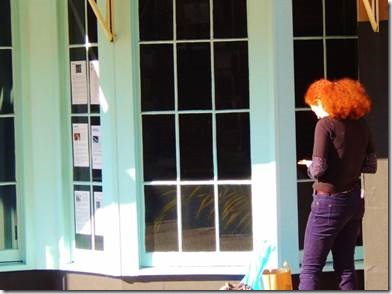
My photo of an Edward Hopper-esque Redhead in Clerkenwell… |
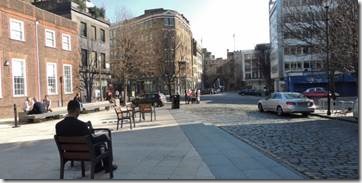 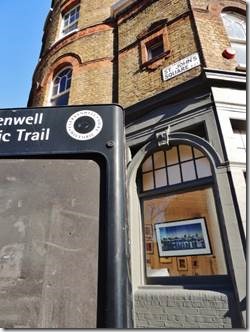
Craft Central studios and showroom and St John’s Gate Former National Penny Bank which now houses Crafts Central “Although run as a commercial venture, the National Penny Bank was in its origins philanthropic, continuing a tradition of penny savings banks established principally in Scotland and Yorkshire from the 1840s. The founder and manager, (Sir) George Bartley, had been involved with Lord Shaftesbury and others in promoting penny banks in the late 1860s, and the National Penny Bank Co. Ltd, formed in 1875, was intended to put the movement on a firm financial footing. Pennybank Chambers (originally Penny Bank Buildings) was only the second building specially erected for the company, which was supported by many prominent and high-ranking figures. (ref. 40) When opened in August 1880, the ground and first floors comprised three shops and the bank itself, the latter occupying the corner and front to the square. A fireproof floor of rolled iron and concrete separated this commercial section from the four floors of dwellings. These were two- and three-room tenements, four to a floor, with shared WCs on the landings. Illustration 561 shows the building as proposed. The prominent dovecote-like corner feature was intended as a laundry, but was omitted from the final design and a cheap rooftop structure of wood and corrugated iron provided instead. As usual in such blocks, the flat roof was used as a drying-ground. (ref. 41) The building is faced in stock and red brick, and is ornamented with terracotta friezes incorporating the bank’s penny-piece emblem (Ill. 560). (ref. 42) The Clerkenwell branch, one of more than a dozen across London, closed in the late 1880s, though the National Penny Bank Co. continued to own the building until it was wound up in 1914. (ref. 43) The lower floors continued in business use, mostly in connection with the jewellery and clock trades, but by 1960 the dwellings were standing empty. In 1977–8 the entire building was refurbished by the London Borough of Islington as craft workshops for the Clerkenwell Green Association. (ref. 44) http://www.british-history.ac.uk/report.aspx?compid=119428#s5 http://craftcentral.org.uk/ http://www.museumstjohn.org.uk/ http://britishlibrary.typepad.co.uk shows 1870’s image and 2010 image. “Craft Central, the new name for Clerkenwell Green Association, is a pioneering not-for-profit organisation established over 25 years that is dedicated to building a strong future for craft and design. Craft Central is a place where things happen. People get inspired. Creative businesses flourish and a community of designers and makers talk, meet and swap ideas. Put simply, Craft Central is a destination for those involved in craft who want to get somewhere, make something happen and see things differently.” “Clerkenwell these days of course is a very desirable and fashionable part of town. To see it now you would be surprised to learn it was one of the biggest areas of concern for the Royal Commission for Housing the Working Classes 1884-85. Charles Booth’s Poverty Map and Notebook of 1898 George Duckworth finds St. John Square to be coloured Purple a mixture of comfortable and poor with Jerusalem Court (leading off from the Tavern) as black: “The blackest spot of all, you can’t paint it black enough, ‘savages’ said Zenthon a danger to the police” Survey into Life and Labour in London Notebook B353 pp150-151 (1898) George Gissing’s publication of The Nether World (1889) also focused on Clerkenwell as an abject slum whilst presenting the new model dwellings to the area in a very unsatisfactory light. It is understood that Pennybank Chambers now artisan studios was originally a model dwelling which these pages intend to show more of. Beginning with St. John’s Gate it was with great interest to discover it to be the childhood home of William Hogarth from 1701 to 1709 whose father had opened an unsuccessful coffee house in the building in 1703. Also the home of Edward Cave St. John’s Gate became the first offices and printing house of The Gentleman’s Magazine founded 1731 and thus sometimes workplace of Samuel Johnson from 1737” http://sketchesbyboz.wordpress.com/2011/07/09/a-clerkenwell-miscellany/ this great site by Jane Young a new wonderful friend! More about Jane Young and Jane Parker; two artisans in a future email. |
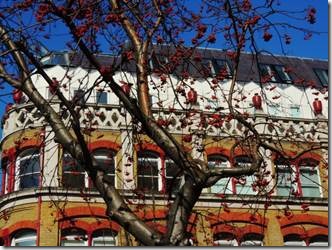
The Printworks, former Victorian warehouse on Clerkenwell Rd. Advert for an apartment in the building • New Development • 704 Sq ft / 65 Sq m • Converted Warehouse • High Specification Forming part of a new development on the corner of Clerkenwell Road and St Johns Sq, this new two bedroom apartment is located on the third floor of a converted warehouse originally built in 1879 called The Printworks. The developer has incorporated a high specification including a fully fitted Keller kitchens with Neff appliances and stone composite worktops, two fully tiled contemporary bathrooms, limed oak floorboards and an air circulation system throughout. An abundance of windows to all aspects offers excellent natural light. http://www.hurford-salvi-carr.co.uk/ |
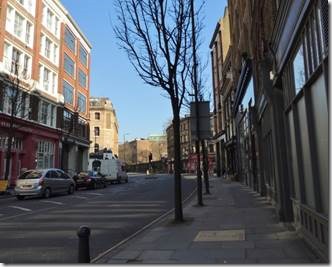
No much happening on Sunday so it calls for a return visit during the week. |
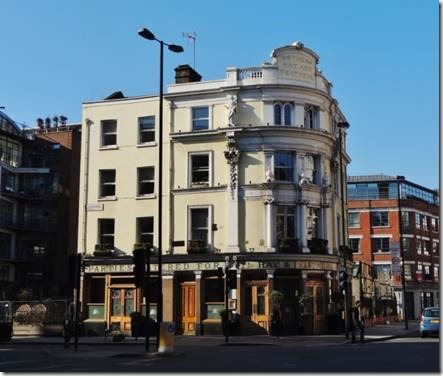
Another interesting building whose name, Hat and Feathers caught my eye as my grandfather was a hat maker. “The present building, replacing an old tavern of the same name, was erected in 1860 for the publican, James Leask. Like its predecessor it was originally numbered in Goswell Street (now Goswell Road), taking its present address from one of a pair of houses with shops adjoining, rebuilt at the same time. No. 2, an eating-house, was amalgamated with the Hat and Feathers in the early 1880s; the other house, No. 4, has been demolished. Illustration 572 shows the original layout of the buildings. (ref. 71) Leask’s architect was William Finch Hill of the pub and music-hall specialists Finch Hill & Paraire, and the builder was also a Mr Hill. The façade—’gay without being crude’ (ref. 72) —is decorated with Classical statues, urns and richly ornate capitals and consoles (Ill. 574). The groundfloor front is probably largely original, the polished granite pilasters being added in 1897 to replace timber ones. (ref. 73) The facia, extending across the front of the former eatinghouse, is of twentieth-century date. At the time of writing (2007) the building has not long been re-opened as the Hat and Feathers Bar and Restaurant, having stood empty or been occupied by squatters since about 1990. http://www.british-history.ac.uk/report.aspx?compid=119428#s22 http://www.theguardian.com/ great restaurant review but since then not much and not great. |
New Malaysian friends
Puteri Harbour Marina
Johor, Malaysia
Many people visit the marina just to get away from the “city.” The day we returned form Melaka DorMac provided the setting for wedding photos.
Alicia and Anthony
Alicia
They were a lovely young couple. He was just so excited to use our boat and she was such a good sport climbing around in very high heels and a hoop-bottomed dress in the blazing heat. These are my photos but they had professionals taking photos. The actual wedding won’t take place until January. We also gave the young couple a tour of DoraMac before they went off to finish their photo session along the dock. It was lots of fun.
(Photo right to left) Khalid Mohd Ariff, Abdul Rahim Khalid (8yrs), Nur Aisyah Khalid (14yrs), Katijah Alias (my wife), Abdul Malik Khalid (17yrs), Abdul Rahman Khalid (12yrs) and Nur Hazimah Khalid (20yrs).
This lovely family from Johor Bahru had come to Puteri Harbour Marina just for an outing during the Hari Raya holiday that ends Ramadan here in Malaysia. Randal invited them onto the boat and we had a wonderful visit. Mr. Khalid is fluent in English, German and of course the Malaysia Bahasa. Nur Hazimah, his 20 year old daughter is studying computer science. Mrs. Khalid works and all of the children are in school. If I remember correctly, Mr. Khalid has a consulting business related mostly to the implementation of ISO regulations concerning environmental issues. Making friends around the world is what travel is all about!
Ru
DoraMac
The Baboon House
So, here’s the story about The Baboon House.
Ru
DoraMac
The Baboon House
“Chinatown Located at the west of the Melaka River is a few rows of old shops that make up Chinatown. This is one of the best Chinatowns in Malaysia. It is mainly located on 3 roads. The first is Jalan Tun Tan Cheng Lock(formerly Heeren St.,& Holland St to the Chinese). It was also nicknamed Millionaires’ Row as most of the Chinese millionaires of the pioneering period lived on this street. The second road is Jalan Hang Jebat(formerly Jonkers St.) and Jalan Tokong(Temple Street). Shop houses date back to the 19th century, with many occupied now by antique shops, restaurants and hotels. Many of them have an opening or a courtyard in the middle of the rather long shops to allow light in and rain water to be collected in a well. http://www.malaysia-trulyasia.com/state_melaka.html We were in an art gallery near The Baboon House and did see a well in one of the rooms that was open to the sky. I could easily live in one of these buildings because of the light and space.
George Town , Singapore and Phuket also have lovely areas called “Chinatown” and all have the same style shophouse but the blurb at the top of the page is a Malaysian website so has a slightly biased perspective.
The Baboon House is located on Heeren Street.
The menu included a wonderful salad or bruschetta so we went in. We chose The Baboon House based on its menu but were captivated by the building itself, a renovated shophouse.
Only while writing this email did I think of the questions I should have asked while we were there. Why the name? What’s the building’s history? I guess for us at the time, it just didn’t matter. It’s why you have to go back to a place a second time to answer all the questions. But we’re not going back so I hunted the web and one site said the café was named for the dog of one of the owners but not the dog actually in the place while we were there. All of the blogs raved about the café. “You have to go for ice tea in a cafe called the Baboon house, its a delapodated building that some mature art students purchased and tarted up, its the coolest place I have ever been for a drink!” That was by someone named Mark H and is a pretty accurate description (misspellings and all) though we found places in Bali, Tibet, Nepal and, of course, Singapore that were pretty similar and were a nice change of pace from the spicer SE Asian food.
It was a lovely building; the food was great and we thought reasonably priced; it was quiet; you could read: what more could anyone want! Oh and there was even a golden retriever you could pat on its lovely friendly head.
Lots of natural light in the small dining area.
You can see it’s not a huge place.
Houses were built narrow but long and tall because they were taxed by width just as in the Netherlands and Melaka was ruled by the Dutch who defeated the Portuguese. This was actually the middle room on the bottom floor.
That’s 4,999 ringgits I’m guessing but that’s still over $1,500 US.
The first room of the building was a small gift shop with jewelry and artwork for sale. No one was about so we called hello and someone from the restaurant came and showed us where to go. They were all very friendly trusting guys since so one seemed to keep an eye on the shop out front. Probably not good for business because not everyone would have made the effort to find the restaurant in the next room. Actually, the lovely restaurant where Suza and I ate in Phuket was designed the same way. I guess that keeps the noise out front and the dining area quiet and maybe you’ll buy something on your way to lunch.
The garden area was the next room along after the restaurant room which I found on my way to “the ladies.”
This small area was next which was used as a work area.
At the back of the garden and the end of the property was the “toilet.”
There I am.
Walking back towards the restaurant.
This room was open to the sky to create an inside courtyard.
The swinging glass doors lead back into the restaurant.
You can eat “western food” like this all over the world, just not all over the world where we usually are so it was a lovely change for us. Of course if every street was filled with Baboon House clones we’d miss our usual E & Y Restaurant in Gelang Patah with it’s wonderful buffet of sauteed veggies, fragrant yellow rice , fried chicken and other dishes we just speculate about and I taste every now and then. It’s just sometimes we miss “American bistro food” so The Baboon House was a great treat.
Melaka by Motorbike part 2
“Beyond Chinatown Melaka loses its soul to traffic, cement and oversized shopping malls.”
Lonely Planet
The section of the State of Melaka where we visited is Melaka Tengah. Within Melaka Tengah is Melaka City and within that area is the small Unesco designated area we visited. So those photos I sent of cute, little, lovely Melaka show only a tiny bit of modern Melaka. But it’s the part we went to see. Actually we went just to be there and walk around and eat some interesting food and see what we would see without making a plan and that’s exactly what we did. I did visit St. Paul’s on the hill and the Art Museum and we did take the river cruise. I think it would be an interesting place to stay for a longer time but a short visit was nice too.
Looking down from St. Paul’s Hill out to the Straits of Melaka
Our favorite places in Melaka were THE BABOON HOUSE restaurant on Heeren Street and the funky Jonker Street.
Fountain at the entrance to Jonker Street
Across the river from the art museum and Christ Church is the entrance to Jonker Street and its neighborhood of shops and restaurants. “Jonker Street literally translated as Second Class Gentlemen in Dutch….In the past, it was the residence of servants servicing the houses of the affluent families in Heeren Street.”
An antique shop along Jonker Street.
In one shop I picked up something that turned out to be a replica of an opium pipe! It was fun to browse but since we had jammed the motorbike carrier with our clothes and rain jackets, we had no room for souvenirs.
Anyone in my family recognize those chairs?
Years ago I bought, stripped, and remade the seats on chairs that look just like these and swore never to do it again!
This shop was a supplier of auto body parts but it was the car that caught Randal’s eye.
Melaka Portuguese food and New Bedford Portuguese food aren’t the same Portuguese food.
I wanted to eat Portuguese food but then didn’t recognize anything on the menu. I had fried squid and Randal had baked salmon but it said Asia to me more than New Bedford. Our second day, Randal and I actually took a taxi out to the Portuguese area but found that weekdays the restaurants are closed for lunch. Without even getting out of the taxi we returned to the Jonker Street area and found a great place to eat called “the baboon house” and I’ll so a whole separate email about it because it was such a neat building.
For a “small fee” at this shop you could find out the best day, time, name whatever before you picked the wrong day, time, name and courted disaster.
This building is on Heeren Street and looks just like a wedding cake. It might have been a hotel but I don’t remember seeing a sign.
A few doors down was this building which I found more interesting though it needs a bit of work. Hopefully it won’t be turned into another wedding cake.
Randal and I took a river cruise that passes through the historic area and then into the areas being renovated with refurbished buildings and green spaces.
Buildings along the Melaka River are being renovated, some with bold paintings.
I like this one and love the outside staircases.
I snuck lots of photos of these 3 sisters.
After the cruise we visited this replica of an old square rigged sailing ship.
Randal was disappointed because only the outside resembled a ship. The inside was a small museum mostly about Portuguese seamen but we were too tired to be very interested.
Places like Melaka, George Town and Singapore offer great places to eat if you don’t mind the adventure of ordering food and then waiting to see what it actually turns out to be.
Restaurant Ole Sayang where we ate dinner one night.
Just looked this place up on the web and everyone said it was the best place in Melaka to eat what is a mix of Chinese and Malay cuisine. It was a few blocks from our hotel so not in the busy hip part of town but when we walked it most tables were taken and not by western tourists. Amazingly enough the folks at the next table had been in the same Portuguese place where we’d had lunch. Unfortunately I had caught some kind of cold and my throat hurt and all I wanted was Jewish chicken noodle soup. But I told our waitress that I wanted soup with vegetables and broth and noodles. It was quite good and also had squid pieces and fish balls that were the Chinese version rather than the Jewish gefilte fish so a bit too fishy for me. But the broth made me feel better. Randal had fried rice and a shrimp dish in some kind of red sauce that might have been red chili sauce and though it was billed as mild was a bit too hot for him. But our waitress was great and had probably been working there since Ole Sayang opened in 1983. The name Ole Sayang caught my eye because I think of Ole as Spanish so it didn’t seem to fit with Sayang which I thought was a Chinese word. So I looked up both words and it’s pretty interesting. A “dondang sayang” is a love ballad influenced by Portuguese folk music and “ole saying” is a “Nonya-Chinese-Malay” expression that means “gift of love” And lots of web blogs I found said that if you want Nonya food in Melaka, eat at Ole Sayang!
But our most fun meal was at the baboon house, a renovated shop house that needed lots of photos so I’m writing about it in a separate email.
Ru
DoraMac
Melaka by Motorbike part 1
Puteri Harbour Marina
Johor, Malaysia
Hi All,
Randal and I took our first motorbike trip last week and I promise never to leave all the maps back on the boat ever again!
Ru
DoraMac
Melaka by Motorbike
Gelang Patah , our starting point, is just about midway between Johor Bahru (the red dot in the center of the tip) and Pontian Kechil directly west from Johor Bahru. We took coastal Hwy 5 from Gelang Patah to Pontian Kechil to Batu Pahat to Muar and then Malacca (British colonial spelling) or Melaka which is the Portuguese and Malay spelling. Road signs say Melaka. It was about 140 miles, we averaged about 40 MPH.
Randal and I had talked about visiting Melaka but hadn’t want to go badly enough to figure out how to get there by bus though it wouldn’t have been an obstacle if we’d really wanted to go. However, Melaka had factored into our decision to get the motorbike since much of the motivation for getting the bike was to do inland travel. Melaka, an historic trading port, has a marina but it was poorly built and has silted over. Cruisers do use it but we were never tempted especially after spending so much time north up the coast in George Town. Our friends Fien and Hans had taken their motorbike to Melaka and had really enjoyed the trip. So this past Monday we set off early in the morning and traveled along Coastal Highway 5 to Melaka. We had planned to go Sunday assuming the traffic would be lighter but woke to a rainy day. Monday was a bit overcast, but we decided to go. We left the boat at 8:30 am, the petrol station in Gelang Patah at 8:45 am and arrived at our hotel in Melaka sometime around 5 pm! It was a long day which included a short and long stop to wait out rain and our time spent lost roaming Melaka’s one way streets looking for our hotel. Fien and Hans had recommend their Melaka hotel and left me with a brochure which included a map. I had printed out a simple street map of Melaka which would have made it quite easy to find the hotel if I hadn’t left it and the Malaysia atlas back on the table in the pilot house on the boat. I’d put all the information together in a lovely plastic case and then left it on the boat. Thankfully I had actually looked at all the maps or we would have been even more lost. Randal was quite kind and didn’t get the least bit upset with me though he did have bouts of anger with the less than perfect highway signs and all of the one-way streets.
We had chosen Highway 5 instead of the inland expressway because we thought the traffic would be lighter and slower. And we thought a coastal road would be more interesting even if it is somewhat less direct. It really wasn’t so interesting but there were options to wait out the rain when it came. The first time was a quick shower just as we road into a small town so we stopped at a tiny restaurant with 3 plastic red tables and had some coffee with sweetened condensed milk (coffee susu) which is strong but not really so sweet as you might think. We had been told that the less you stir it the less sweet the taste but I wanted mine sweet so I stirred it all up. Twenty minutes later we were back on the bike but not for long. We soon ran into a downpour but luckily we were just across from a petrol station. We spent about an hour there. Randal ate ice cream and then potato chips and I had a few of the chips which ultimately turned out to be our lunch since our next stop was a restaurant in Melaka about 4 :30 where we ate an early dinner and got directions for our hotel. We left the petrol station in a light drizzle but thanks to that and wet roads, our shoes and shorts got sopping wet though I stayed drier than Randal who took the brunt of the wet.
The Cozy Hotel (photo from their website)
It was clean, comfortable, and at 80 ringgits or $25 (the motorbike rate) very reasonable. We could watch the movie channel and Hallmark if we told the reception desk to reset the TV from the more local Malay shows. We could even watch “The Nanny” with Fran Drescher which seems oddly popular all over Asia. But mostly we were out and about from early morning until about 4:30 and then we’d go back out and find a restaurant near our hotel and eat dinner. We were usually asleep pretty early and then up pretty early. In the lobby you could get hot water, tea or coffee so first thing in the morning I would put my raincoat over my PJs and go get us some. Our motorbike was parked in the small shed through the white door and that’s where it stayed because we could walk everywhere we wanted to go.
There was a tiny Zen-like enclosed area separating the rooms from what is really an older area of small shops.
We were about a 15 minute walk from the historic area, Chinatown and the funky Jonker St. So after a short rest, after a long day, we walked to the historic area just to have a quick look.
The heart of historic Melaka.
“Historically Melaka has been one of the most-sought after havens in the region. In the 14th century Parameswara, a Hindu prince from Sumatra chose Melaka as a favoured port for resupplying trading ships. From this time Melaka became protected by the Chinese in 1405, then dominated by the Portuguese in 1511, then the Dutch in 1641 and then finally ceded to the British in 1795.”
Southeast Asia on a Shoestring from Lonely Planet
What I find most interesting is that the old square rigged ship sailed with the prevailing winds to places like Melaka, George Town and Singapore and then had to wait months for the wind to change to sail home resulting in the sailors and traders intermingling and intermarrying with the local people impacting local culture, customs and cuisine.
Tuesday we got up bright and early and went off to first find breakfast, an Internet café and to see Melaka. We ate at Toast n Toast http://www.taufulou.com/2009/09/26/toast-n-toast-jalan-melaka-raya-melaka/ which sells toast with a variety of toppings. I had my whole wheat toast topped with peanut butter. Randal had an American breakfast which was toast and eggs, a hot dog and baked beans. The coffee and tea were good and so was my toast and Randal says his American breakfast was just fine. The owners were friendly and we stopped in for something to drink on our way back to the hotel in the afternoons. We asked where we could use the Internet and our young waiter directed us to Tom Net Online just further down the street.
Randal’s favorite place in Melaka where the computers were very fast and you never had to wait.
I thought we were stopping in to check email and Randal thought we were stopping for the morning!
But that worked out just fine. I knew my way to the historic area from our walk the previous evening and I knew that I wanted to visit the ruins of St. Paul’s Church and the art museum an activity best done alone because I can take forever looking at one watercolor painting. So off I went and had a lovely time.
Ruin on the left is from a Portuguese fort and Saint Paul’s is up the hill.
Old Portuguese and Dutch tombstones lean against the walls.
The church was built by the Portuguese, taken over by the Dutch and used for storing gunpowder by the British. On my way up the hill I passed a young man selling watercolour paintings so stopped to buy one. There were two other men selling pen and Ink drawings and old photographs just outside the church and a man playing the guitar and singing gospel songs inside the church.
It was a lovely and cool with lots of light and shadows.
I could have stayed quite a while but there were other things to see and I wanted to go to the art museum before I met Randal later for lunch.
Tea at a riverside café.
I was really thirsty and a bit hungry so stopped for some milk tea at a small café along the river. In the afternoon Randal and I took a short boat trip along the river.
This was the scene across the river.
The artwork on top is done in batik and the lower one is watercolor
Christ Church is, to me, the most memorable image of Melaka.
It was built by the Dutch in 1753 as a Dutch Reform Church but became an Anglican Church when the British took over the church in 1795. No photos were allowed inside
The entrance fee for the Museum was 2 ringgits, less than $1 US. There were dozens of lovely watercolor paintings and since photography was allowed I took lots of photos to study and learn from.
A photo, not a painting.
I took this photo from the balcony of the art museum and you can see the suits that had been hanging on the fence along the river transformed into human statues.
Victoria Fountain built in 1904.
The art gallery was on what we call the second floor. Randal noticed a door and we went outside onto a balcony and I took photos while Randal held the flag out of the way.
The trickshaws were all decked out with flowers and they played American pop music.
Then it was time for lunch….
Quick Trip to Singapore
Puteri Harbour Marina
Johor, Malaysia
Monday morning Randal and I went off to Singapore for a few days to buy some boat electronics and reading books. We were driven in the Puteri Marina van from the marina to the bus station in the nearby town of Gelang Patah. Arriving just in time, we caught the 9:45 am Causeway bus for the short trip across the Straits of Johor to Singapore. We got on the bus at Gelang Patah, off the bus at Malaysia Immigration to exit Malaysia; back onto a bus for the very short trip to Singapore Immigration where we got off the bus and went through Singapore Immigration to enter Singapore and then back onto a bus to Jurong East where there is an MRT station. If you’re quick you can get off a bus, deal with immigration and then get right back on a bus. If you hit a slow line in immigration, you miss the bus and have to wait for the next one. This trip we seemed to be waiting for buses all of the time. But then, we’re retired with all the time in the world. However, we were lucky enough to have seats on each bus. At times the buses are really crowded and you just have to stand up through the trip.
We got off the MRT at Bugis and followed the fast food signs to a McDonalds so Randal could get his “meat” fix. Then he walked off towards Little India to look for electronics and I went off to look for used books at the Bras Basah Complex. I bought Her Living Image by Jane Rogers and What Rosie Did Next by Nina Dufort though I’ve not read anything by either author (for ” 2$ Singapore” per book one can experiment.) This is how I choose a book. First I look to see if the main character is a woman which I prefer. Next in importance is the locale where the story is set. I have to be interested in the place, have been there or want to go there. Then I read the first page. If I like the writing, I buy the book. Sometimes I even pick books where the main character is male, but not so often. Meanwhile, Randal was browsing and buying his way through the electronic shops. He bought tiny LED bulbs that needed to be soldered individually into the circuit board for the overhead light in our pilot house. He bought other stuff too, but the list is too long though the items themselves were quite small. We did buy a rain cover for our motorbike and discovered there are hundreds of motorcycle and motorbike shops in Singapore. We had actually been worried about finding one. We both walked miles and miles carrying our backpacks and everything we bought. Our reward for all of that walking was to share a banana split for dessert after dinner at Swenson’s where we each ate a fairly healthy Caesar salad for dinner.
Next day we went off to Arab Street. My friend Ellen’s sister does beadwork and I wanted to bring her some beads from a shop on Arab Street. I like that area and when Randal’s nephew Tammy came to visit it’s where we did our walking tour. Most shops hadn’t yet opened and wouldn’t until 10 am or even 11 am. But luckily the bead shop was. Then we stopped for tea tarik and coffee susu.
Just near the Mosque were school children of Chinese descent on a visit to the area learning about one of the other cultures that makes up multicultural Singapore. The local man standing under the word Textiles on the left side of the photos seemed just as fascinated by the students.
I actually was more interested in taking photos of him than of the kids! Even here in Malaysia most men wear western dress so this fellow’s clothing caught my eye.
Actually, so did this woman who was so focused on working with her camera. I’m guessing that she is reviewing photos stored on her camera. She seems to be smoking though it’s odd that it is allowed where she is sitting. Singapore is quite strict about NO SMOKING rules. In Singapore her short skirt and top were acceptable. Across the Johor Straits in Malaysia she would have looked very much out of place even though a visitor.
We had made plans to meet our cruising friend Marie Louise who is still happily living on her boat Dessert First at One Fifteen Marina on Sentosa Island in Singapore. She has made many friends during the past year and early in August she was wined and dined and surprise partied for her 82nd birthday! We were to meet in the Borders Bookstore Café at Wheelock Place on Orchard Road at noon. Randal and I took the MRT getting off at Orchard and walked through the maze of underground shops and such to get where we needed to be at Wheelock Place. When we asked for directions to Borders, the young man at an Information Desk told us but also suggested that we might like to visit Prologue Bookshop. We had time so off we went to a section of the ION Mall where we’d never been in all of our visits to Singapore.
A shop called VOM FASS caught Randal’s eye.
A barrel of Scotch!
Randal wants one of the wooden barrels filled with Scotch for the boat though we fear that it might end up taken away by a very zealous customs official. The man and woman in the shop are the owners. He is from Germany and she from Singapore.
www.vomfass.com is the website.
I loved the bottles filled with colored liquid.
Alcohol, oils, vinegars.
There’s a recipes section on the Vom Fass website which, of course, calls for their products but you can adapt. http://www.vomfassusa.com/recipe.jsp?id=2523 is a tempting recipe for salmon.
After a lovely chat and with my tiny purchase we left Vom Fass and walked into and immediately out of Dolce and Gabbana. Very “upscale” shops on Orchard Road
At the bookstore, {prologue} I bought a copy of The Girl With the Dragon Tattoo and an instructional DVD about how to draw. As I was paying I had a lovely conversation with the store manager and left her with the address of our website. She wanted to come with us and I said if she could bring all of the books that would be great!
Randal and I made our way back through the Ion shopping mall over to Wheelock Place mall to Borders where we discovered the “in-store” café was closed. But we did meet Marie-Louise and had lunch somewhere else. The service was iffy at best and though Randal and I both ordered Diet Coke they brought one Diet and one regular Coke. My quiche was good and so was Marie-Louise’s bruschetta but they forgot to bring Randal’s meatball sandwich so we had to re-order and then it wasn’t very good anyway. When Randal pointed out on the bill that we had ordered 2 Diet Cokes the waiter’s response was that they were the same price. He didn’t get the fact that we had received the wrong drink and Randal hadn’t sent it back so it really didn’t matter at that point. That night Randal rewarded himself at dinner with a small steak and another banana split! Luckily we did lots of walking that day too.
After our lunch I stayed a bit longer to visit with Marie Louise. (Randal went off to pick up something he’d ordered the day before from a small shop in Little India.) After saying good-bye to Marie Louise, I started to walk back in the direction of Little India and our hotel. This would take me to the Dhoby Ghaut MRT across from the Singapore School of the Arts which I had walked past lots of times in previous visits to Singapore. The School had been under construction with the entire façade blocked off creating a sidewalk detour. Since my nephew Andrew received his Master’s of Design and now teaches at the Philadelphia School of the Arts I thought I’d visit the Singapore School and take photos for him. Randal and I will be leaving SE Asia soon after our return from the US so I didn’t think I’d have another chance. Well, other than these photos of the pretty impressive façade and entranceway I still haven’t seen it.
The new façade of the building which had been behind barriers while we lived at One 15 Marina for two months in 2009.
I walked back through the entrance and took the escalator up and the guard told me that I couldn’t go any further. Much of the school was still under construction. Classes were held but only students were authorized to go into the building. I suppose that’s fair enough. And the guard, though firm, smiled and was polite.
In a complete contrast to the guard, the few students I spoke to were horribly rude and snotty! I was amazed. I started talking to this young girl and boy and they were completely uninterested but at least, semi-polite. A few more of their friends came and they were just rude. I started to tell them about traveling around the world and learning about art and one of them all but said, “Who cares. Go away.” I said if they were artist, weren’t they supposed to want to communicate? To her credit the young girl in the white sneakers tried to cover for the boy who had spoken telling me that he was a “visual artist.” I don’t remember exactly what he said next but it must have made me mad because I said to him, “You do know that you won’t succeed very far in this world.” I thought later that I should have told him that if he was going to be that rude he had better be a great artist or he was in for big trouble. I was just amazed at that kind of rude behavior to an adult and an obvious visitor to Singapore. But these were teens and not graduate students like the Philadelphia School and there is a difference. And in all of our travels students have always been interested and polite. These kids were just spoiled brats!
I walked to the MRT near the school and got off at Little India. Randal was sitting in the outdoor restaurant next to our hotel and had ordered me a glass of white wine. Later that evening we walked back to Swenson’s and that’s when Randal ordered his steak and banana split and I had fish Caesar salad and a double scoop of ice cream. One scoop was durian which tastes like lemon sherbet mixed with sautéed onions and is actually quite good and one was purple yam and I ate them both!
Next day we packed up and returned to Malaysia and DoraMac. When I turned on my computer it acted dead and our front room AC wouldn’t work because the saltwater circulating system was stopped up. Randal fixed the AC by cleaning out the system and I fixed my computer by taking out the battery and letting the computer rest for a few hours. As Randal says at the end of his Facebook status reports, “Life in the Tropics.”
If the weather cooperates Randal and I will take the motorbike the 120 or so miles north up the coast road to Melaka on Sunday. We’ll go early in the morning to avoid traffic and the usual afternoon showers. Our friends Fien and Hans made the trip and it took them about 4 hours. I don’t like to go fast and we’ll need some breaks for rest and petrol. Yesterday we road to Gelang Patah to refill the bike and it cost less than $2 US for .98 gallons which is all the bike holds. We get about 100 miles per gallon cruising at about 45 MPH holding two western sized people. Our fuel efficiency should improve the more we ride so Randal says. We’ll keep you posted.
Ru
DoraMac
We bought a motorbike!
Puteri Harbour Marina
Johor, Malaysia
Hi All,
Amazingly enough, Randal and I have bought a Honda Wave 110 Motorbike. Our friends Fien and Hans convinced us that it was very possible to travel around Malaysia and to load and unload the motorbike from a boat. I think we were convinced because of the isolation of Puteri and the lack of convenient public transportation. Spending too much time at a marina really isn’t travel. Having finally made the decision, we bicycled to the Gelang Patah Honda dealership Monday. This afternoon Randal went to get the motorbike and to practice riding alone. Then he and I went out for a practice ride and saw parts of Johor we would never have seen. Nothing spectacular, but real non-touristy Johor. We rode for about 2 hours and decided that any ride longer than that would require a break to stretch our legs and rest other parts of our body. Mostly we did about 35 mph and that was a good speed for me to feel comfortable. When we did about 48 on the “highway” I didn’t love it. But I see it as finally a chance to travel outside major city marinas. In Singapore, Kota Kinabalu and even George Town you could take the MRT or buses or walk. But other areas needed some kind of vehicle so nothing could be spur of the moment or easy or whatever. It always took a plan and an expense. Now the motorbike wasn’t free, obviously. We paid $1,627.68 but that’s license plates, registration, insurance, two helmets, a heavy wire basket in front, a locked rear basket, disc brakes, aluminum wheels, heavy tubeless tires, a spare chain, spare bulbs and enough oil for two oil changes. And we’ll have to pay for gas. And rain will be an issue. But on the whole it will mean we can go inland and see the countries that we visit. That will be so nice and is really half the point of our travels.
Ru
DoraMac
Checking our options at the Honda dealership in Gelang Patah
Our friends Fien and Hans had told us about the Honda dealer in Gelang Patah where they had bought their motorbike and how pleased they were with the service and prices. (We had actually looked at a motorbike in Sungei Rengit near Sebana Cove but weren’t going to stay long enough to bike for a bit and then get it’s first service.) So this past Monday we bicycled into Gelang Patah to buy a motorbike but hadn’t thought to bring our passports. When we signed the contract for the bike, one of the men took Randal on a motorbike back to the marina to get his passport. They also took him to the police station to check on a Malaysian driver’s license. But Randal couldn’t get one because we only have a tourist visa. Perhaps you have to have some kind of employment visa to get a license here. It would probably entitle you to lots of things like library cards! But his Virginia license which is stamped with an M seemed to be ok. He’ll get an international license when we come home. I say he because I don’t see myself driving. I know my strengths and driving a motorbike isn’t one of them. First I need to learn to drive our dinghy! When you buy the motorbike it comes with Malaysian Insurance which is good. We will be able to take it with us when we travel through the Med and that means seeing so much more than we have in the past with just our bicycles or public transportation.
My bright orange shirt is just the thing: like having a big flag on the back of the bike so drivers will notice us.
6 knots by boat, 10 MPH by bicycle and 45 MPH by motorbike. Good thing we’re never in a hurry!
Putting a motorbike onto a sailboat.
We watch Hans and Fein put their bike on their boat to see how it could be done. Fien is winching the bike up as Hans holds it away from the boat so not to scratch up either.
Fien uses a winch to hoist up the motorbike.
Randal thinks we can use the mechanism that lifts our anchor so I won’t have to do as much work as Fien. I do the same sort of thing when we have to pull our stabilizing “fish” out of the water. They each weigh 62 lbs. By the time I’ve pulled up the second one, I’m pooped. And Randal is doing the same thing as Hans; holding the fish away from the boat though for that he is on the boat. The bike ways three times as much; 187 lbs. so it’s a good thing the anchor windless will pull the motorbike onto our boat.
Getting Around and A Really Good Cause
Hi all,
Randal and I are thinking about buying a motorbike. We cycled into Gelang Patah yesterday to visit the cycle shop but it was closed. We’ll go back today. Though at first reluctant, now I’m quite gung-ho especially since our friends Fein and Hans say they just travel at about 35 MPH and have no problems. At that speed maybe I’ll be ok. And I always thought riding the motorcycle taxis in China were fun. Fein did worn me about touching my leg to the exhaust pipe because it leaves a severe burn. Fein sports a scar from her experience. But the newer model which we might get supposedly has an exhaust pipe cover. Hope so. Wish we had done this sooner so we could have gone adventuring with them. They are off this morning towards Rebak on Langkawi. But we will see them along the way. Maybe we’ll bike through Egypt and Israel together while we’re in the Red Sea!
Now I’m going to brag a bit about my nephew Andrew who is a co-founder of Urban Studio in Philadelphia. http://urbanstudiophl.wordpress.com/about/
Its “mission is to collaborate with Philadelphia communities to develop new processes for creating solutions for sustainable urban living.”
http://www.kickstarter.com/projects/1124355448/visual-voice-people-neighborhoods-design?ref=email
is their latest project. I’m supporting them and wish them great success.
Once upon a time I worked at things I hoped would “help the world.” Now I just travel around it so I’m glad others are doing the work to save it.
Ru

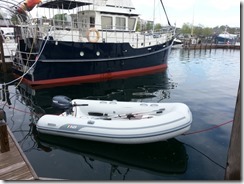
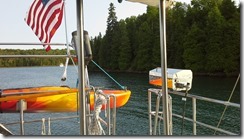
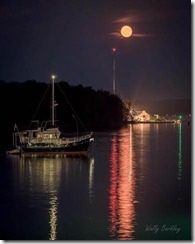
![clip_image001[5] clip_image001[5]](http://www.mydoramac.com/wp-content/uploads/2014/11/clip_image0015_thumb.jpg)
![clip_image002[5] clip_image002[5]](http://www.mydoramac.com/wp-content/uploads/2014/11/clip_image0025_thumb.jpg)
![clip_image003[5] clip_image003[5]](http://www.mydoramac.com/wp-content/uploads/2014/11/clip_image0035_thumb.jpg)
![clip_image004[5] clip_image004[5]](http://www.mydoramac.com/wp-content/uploads/2014/11/clip_image0045_thumb.jpg)
![clip_image005[5] clip_image005[5]](http://www.mydoramac.com/wp-content/uploads/2014/11/clip_image0055_thumb.jpg)
![clip_image006[5] clip_image006[5]](http://www.mydoramac.com/wp-content/uploads/2014/11/clip_image0065_thumb.jpg)
![clip_image007[5] clip_image007[5]](http://www.mydoramac.com/wp-content/uploads/2014/11/clip_image0075_thumb.jpg)
![clip_image008[5] clip_image008[5]](http://www.mydoramac.com/wp-content/uploads/2014/11/clip_image0085_thumb.jpg)
